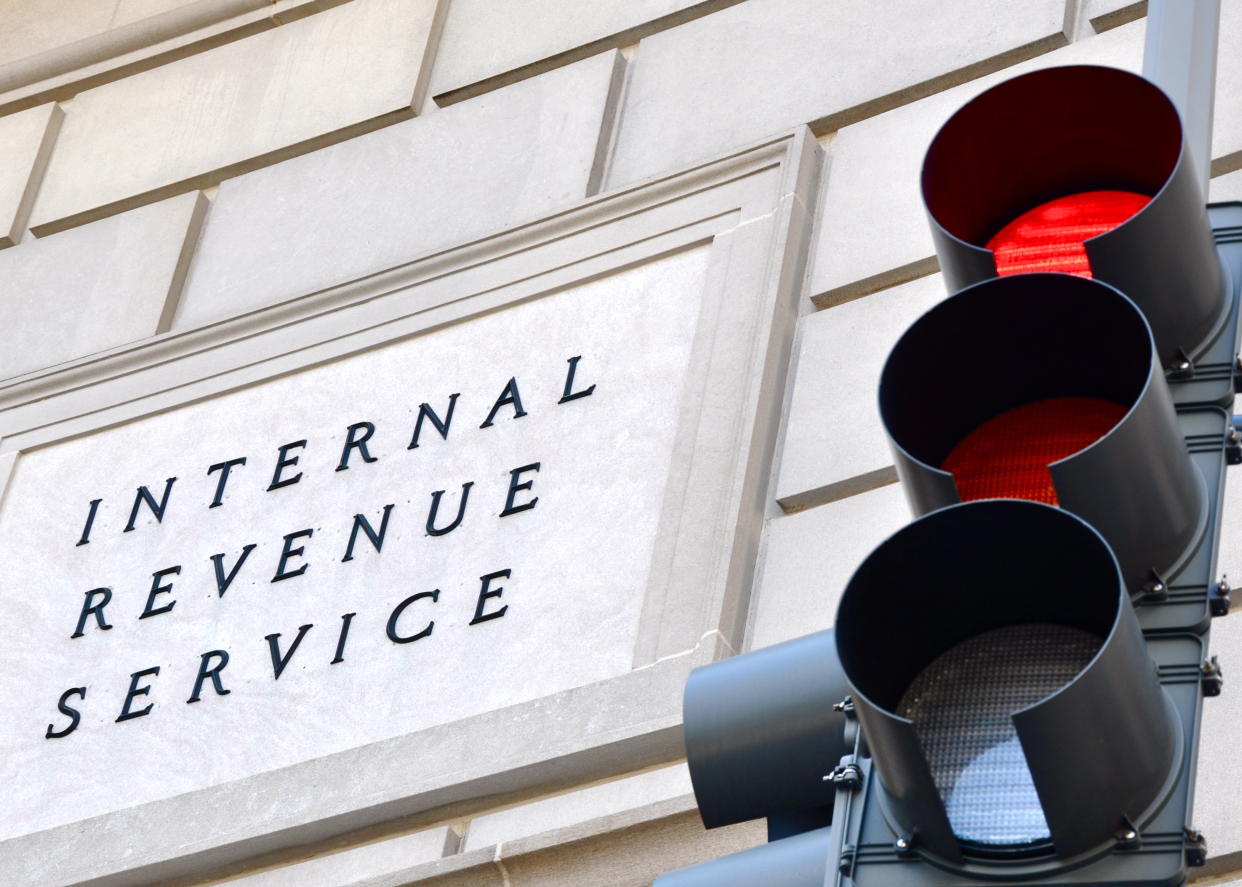IRS tells small businesses to withdraw ineligible claims for lucrative tax credit
The IRS is urging small business owners who claimed a lucrative tax credit to review their eligibility again and promptly withdraw any unqualified applications.
The announcement this week from the IRS revolves around the employee retention credit, or ERC, worth up to tens of thousands of dollars. If business owners find themselves ineligible, the Internal Revenue Service has provided several methods for them to withdraw their ERC claim depending on the status of their return.
The agency’s moves come after it warned for months that many aggressive ERC promoters were over-qualifying unassuming business owners for the credit, prompting the IRS to stop processing claims with the ERC altogether and putting some taxpayers at risk of having to return the credit and possibly face penalties and interest charges.
“A promoter can collect a hefty contingency fee paid from the ERC refunds,” Roy Chaney, senior stakeholder liaison with the IRS, said during the webinar on Thursday outlining how businesses can withdraw their applications. “This underscores the importance of taxpayers taking precautionary steps to independently verify their eligibility to receive the credit.”
Read more: How to find the best business credit cards for November 2023

ERC mills
The ERC is a refundable tax credit that was designed to encourage employee retention for businesses and tax-exempt organizations impacted by COVID-19 during the pandemic. Qualified employers can claim up to $26,000 per worker on the payroll between March 12, 2020 and Dec. 31, 2021.
Although employers can retroactively claim the credit until 2024 for 2020 payrolls and 2025 for 2021 payrolls, the IRS had paused processing and accepting new applications until further notice due to the prevalence of scams run by “ERC mills,” the agency previously said.
These ERC mills — often pop-up online companies without prior tax-filing experience conducted by CPAs — made claims for small business owners who otherwise would not have qualified for the credit. These mills also received a cut of the refund as their fee that they sometimes got up front. Others received their fee after the IRS issued a refund. Before the IRS paused processing these claims, many unaware small business owners may have received tax refund money they shouldn’t have and now have to give it back.
Experts with knowledge of how the IRS works previously told Yahoo Finance that the agency is likely building criminal cases against these fraudulent firms to deter bad players in the industry.
“The IRS is working with the Justice Department to address fraud in the ERC program as well as promoters who have been ignoring the rules and pushing businesses to apply,” Chaney said. “Specifically the IRS Criminal Investigation Division is actively working to identify fraud and promoters of fraudulent claims for potential referral for prosecution to the Justice Department.”

How to withdraw an ERC claim
Still, the agency wants to provide an out for those small businesses that unknowingly went along with the claims these ERC firms filed on their behalf.
To do so, the agency is encouraging small business owners to check their ERC eligibility by reviewing the agency’s ERC qualification checklist or chatting with a trusted accountant. Taxpayers should do this even if they have already submitted their return, especially if they’ve done so through a so-called ERC mill.
“We continue to remind taxpayers to seek out a trusted tax professional who understands the complex ERC eligibility rules,” Chaney said, “not a promoter or marketer trying to get a hefty contingency fee while taking advantage of honest taxpayers.”
Taxpayers must take different steps to withdraw based on their return status.
For taxpayers who filed the credit through a return (Form 941-X, 943-X, 944-X, CT-1X) but haven’t received a refund or haven’t been told their application is under audit, they can sign and date their original return copy with the word “withdrawn” on the left margin and fax it to the IRS at 855-738-7609. This is known as a claim withdrawal request.
For taxpayers who haven’t received a refund but have been notified they are under audit, they can prepare the same claim withdrawal request as above and send it to their IRS auditor as a response.
For taxpayers who received a refund check but haven’t cashed or deposited it, they must send a package including the claim withdrawal request, the voided refund check, a written explanation including a reason for withdrawal, copies of their ERC return, and mail it to the IRS at Cincinnati Refund Inquiry Unit.
The IRS is still working on a withdrawal process for taxpayers who have already cashed or deposited their refunds.
Taxpayers need to create a separate claim withdrawal request for every withdrawal period. For instance, an employer who wanted to withdraw ERC claims for two quarters in 2020 would need to submit two separate withdrawal claims for each quarter. Chaney also noted that small businesses may withdraw their ERC claims for ineligible quarters while also claiming the credit for other eligible quarters.
The agency also specified that businesses that did not receive payment and withdraw their claim are immune from penalty charges.
“I'm very happy to state that if you are withdrawing a claim of ERC, which is yet to have been processed — meaning we have not paid it out — this withdrawal process absolutely allows you to withdraw that claim without any civil penalty or interest associated with it,” an IRS official said on Thursday.
The official did not address if penalties are associated with claim withdrawals where the business owner cashed or deposited the refund already.
Rebecca Chen is a reporter for Yahoo Finance and previously worked as an investment tax certified public accountant (CPA).
